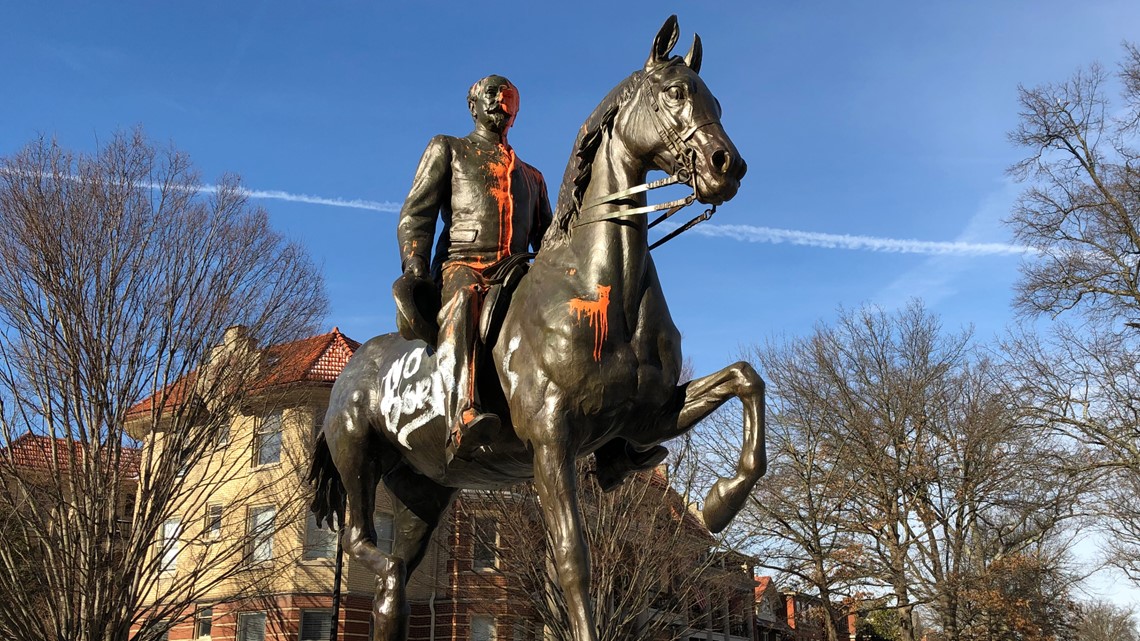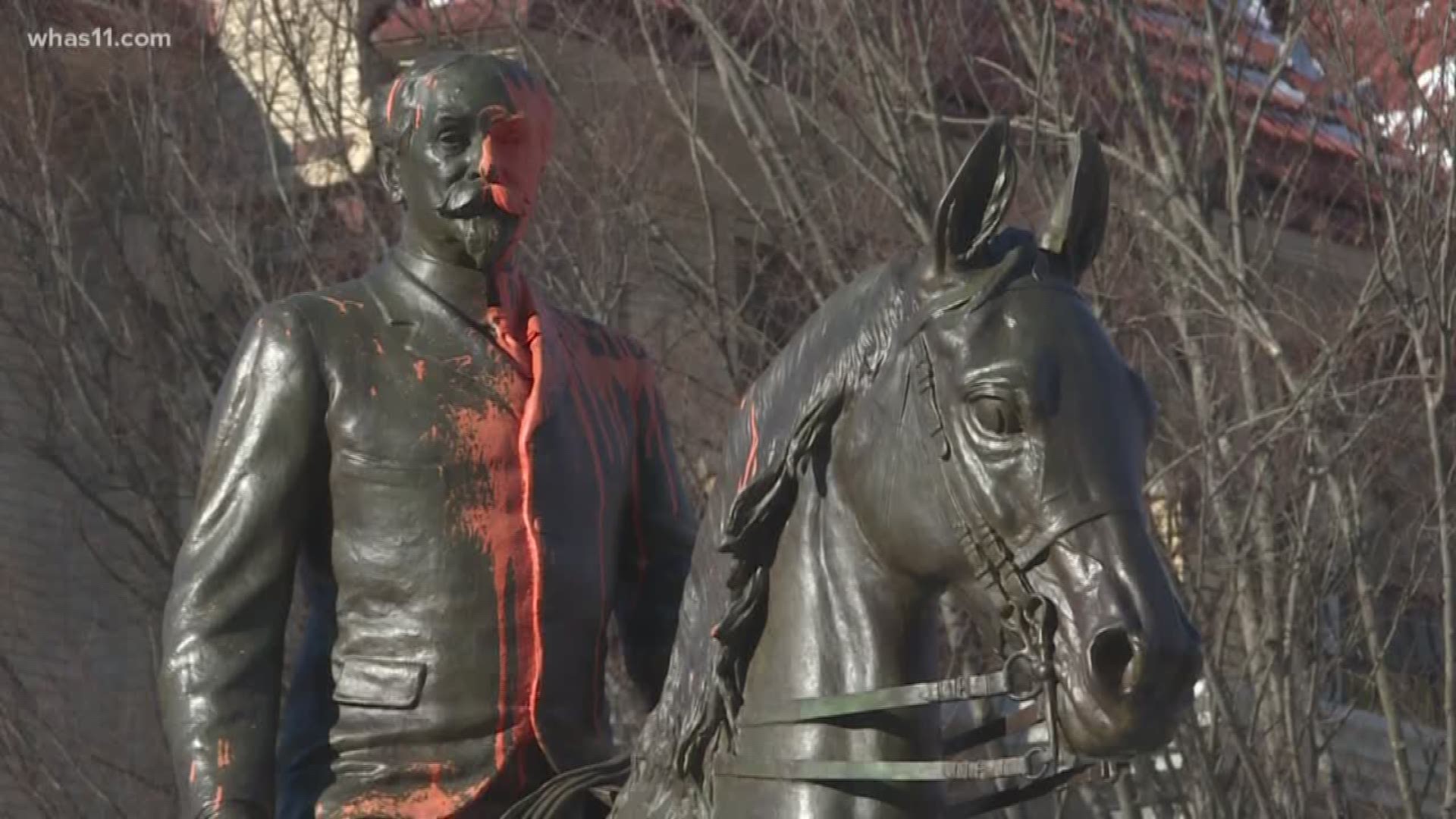LOUISVILLE, Ky. — The debate over just what should happen to the statue of John B. Castleman at Louisville’s Cherokee Triangle continues. Castleman has been thrust into the ongoing national debate surrounding Confederate statues, but his case is more nuanced than some others.
For one thing, the statue of Castleman isn’t technically a Confederate statue—he’s not wearing confederate garb in the depiction. And, his time as a Confederate soldier is only part of the story.
WHAS11 turned to local historian Dr. Tom Owen at the University of Louisville to get a clearer picture of who Castleman was.


To be clear, he did fight for the Confederacy. In fact, he was part of a group called the Morgan’s Raiders, a confederate unite that became infamous for raiding Union towns, farms, and prisons. At one point, he was arrested and sentenced to death.
However, his sentence ended up being commuted, so he lived; and after the Civil War ended, his life became much tamer. He became a businessman in Louisville, and later he served as a military officer for the Union army.
He also was one of the fathers of the Louisville parks system—and, contrary to some legends surrounding the topic, Dr. Owen said Louisville parks were not actually segregated until years after Castleman died.
Here’s the thing, though. Even though Castleman did learn to get along with his Union neighbors in the long run—and even ended up fighting alongside them—he never renounced his time as a Confederate. In fact, at the end of his life, he was still pretty proud of all that he did during his time with Morgan’s Raiders.
Because of this, Dr. Owen—who sat on the advisory committee deliberating the fate of the statue in Louisville—ultimately agreed that it should be moved from the public road.


“He is a mixed bag,” Owen said. “Was he repentant of his service in the Confederacy? Absolutely not. Did he have a distinguished career? Was he a part of that white adjustment…to try to put the civil war behind us? Yeah, he was very much a part of that. But, as the mayor says, there’s no public statue—we’re talking about in the middle of the street—that should be located in any place in Louisville that cannot be located comfortably in every place in Louisville.”
A public hearing on the statue’s ultimate fate is scheduled at the old jail building on Wednesday, January 23, 2019 at 5:30 PM, as city leaders and advisors continue to debate where the statue should be moved.
►Contact reporter Rob Harris at rjharris@whas11.com. Follow him on Twitter (@robharristv) and Facebook.
WHAS11 Anchor Doug Proffitt spoke with local historians and a member of the Public Art and Monuments Advisory Committee about the controversy surrounding the statue and its removal in an episode of The Proffitt Report Podcast.

